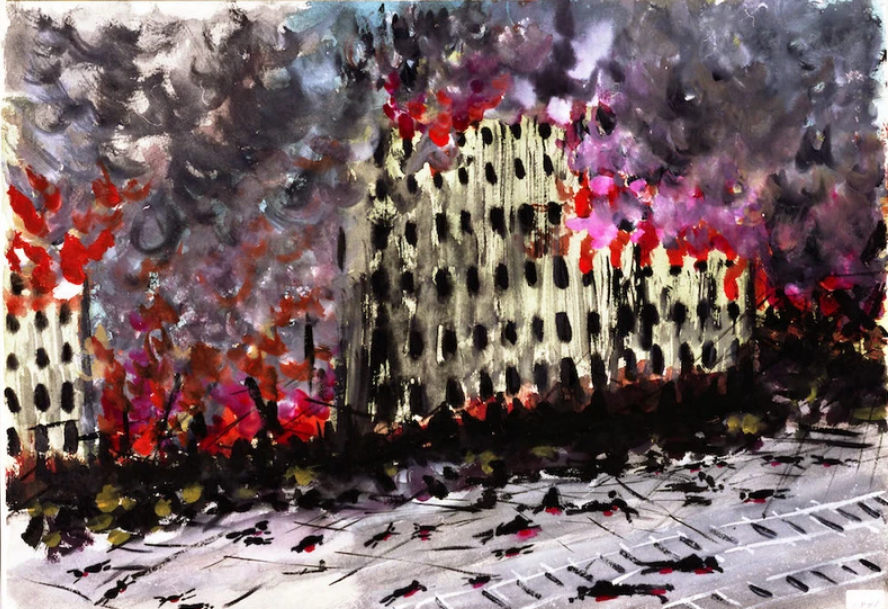
Created by Kobashi Someharu. Fukuya Department Store, burning and burning. Image courtesy of Hiroshima Peace Memorial Museum
by Sean Howard
“We now send greetings and thanks to our eldest Brother, the Sun. Each day without fail he travels the sky from east to west, bringing the light of a new day. He is the source of all the fires of life…” — From Greetings to the Natural World, the Thanksgiving Address of the Haudenosaunee (Iroquois) Confederacy
On February 16, Canadian Green Party MP Elizabeth May presented a petition in the House of Commons urging the government to sign the new UN Treaty on the Prohibition of Nuclear Weapons (TPNW), the ‘Ban Treaty’ which became international law earlier this year. The petition notes that while even a single “nuclear weapons detonation could result in a humanitarian catastrophe so immense that it is impossible to comprehend” – with “results…far worse than any pandemic as there is no known meaningful medical response” – in any major exchange “nuclear winter could be triggered, causing widespread famine throughout the world.”
This is, indeed, what the science tells us: that many of the nearly 14,000 nuclear weapons on earth are capable of turning cities to clouds of high-rise, long-lived, sun-blocking soot. In fact, even a ‘minor’ exchange – e.g. a few hundred Hiroshima-sized detonations – would cause, in addition to millions of deaths from blast and fall-out, climate damage condemning even vaster numbers to starvation.
One of the most impressive aspects of the international Humanitarian Initiative which led to the negotiation of the Ban Treaty in 2017 was the emphasis on new research into the catastrophic impacts of nuclear use, for example (to quote the Treaty preamble), the “disproportionate impact on women and girls…of ionising radiation.”
The world’s nine nuclear-armed nations (China, France, India, Israel, North Korea, Pakistan, Russia, UK, US) seemed genuinely confused: what more of value could be learned about the monstrous effects of weapons prized precisely for their monstrousness, their supposed ability to ‘deter’ – that is, to intimidate and terrorize – adversaries? Addressing the United Nations First Committee (on Disarmament and International Security) in 2016, France’s Head of Delegation, criticizing attempts to “base the future of nuclear disarmament simply on a humanitarian approach,” insisted that “the humanitarian impacts of nuclear weapons have been well known for several decades.”
Yet, while the Bomb is indeed pure evil, it is also a Devil of many details, some with the potential to shatter preconceived notions regarding the full environmental costs and consequences of atomic conflagration. Astoundingly, though the basic facts have been clear since the breakthrough nuclear winter studies of the 1980s, the physics of atomic mass fire seem never to have been adequately incorporated into the war plans of the two nuclear superpowers, America and Russia.
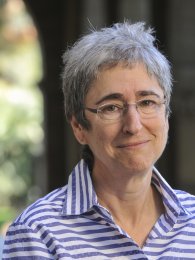
Lynn Eden
In her landmark 2004 study, Whole World on Fire: Organizations, Knowledge, & Nuclear Weapons Devastation, Dr. Lynn Eden of Stanford University sought to answer a terrifying question: “How and why, for more than half a century, has the US government seriously underestimated the damage that nuclear weapons could cause?” The fatal error was easy enough to identify: “The invention of the atomic bomb and the extraordinary blast and fire damage wreaked on Hiroshima and Nagasaki did not disrupt the pre-atomic dynamics” of war-planning and damage assessment:
After the bomb, organizational goals remained concentrated on the destruction of specific targets, and government analysts…continued to understand blast damage as more certain, hence more predictable, than fire damage. In short, analysts ‘saw’ atomic weapons as ‘blast’ weapons.
So profound was this neglect that it led to “a total incapacity to predict nuclear fire damage” – “no recognized experts, no manuals, no knowledge-laden organizational routines” – and the acceptance of the circular argument that because such damage was ‘clearly’ unpredictable, it was a waste of time to see if it was! Even before the danger of nuclear winter was known, this was, in the words of historian Paul Edwards, an “astonishing case of self-inflicted institutional blindness.”
And in 2004, Eden stressed, it was still the case that the “conventional wisdom among the scientists, civilians, and military officers who compose what is called the ‘nuclear weapons effects community’ is that damage from blast is predictable but damage from mass fire is not,” despite mounting evidence that the impacts of nuclear firestorms “can indeed be predicted” and “will very often be more extensive than damage from blast.”
Seventeen years later, does that ‘wisdom’ remain conventional? To my knowledge, no one has reported or suggested otherwise; and no independent study has been ever ordered by the US Government to review the adequacies of the orthodox approach. Until, that is, now.
Buried deep in the belly of a very large beast – Section 3171 of the new $740 billion Pentagon budget – the National Academies of Sciences, Engineering and Medicine (the NAS) are commissioned to conduct an “Independent Study on Potential Environmental Effects of Nuclear War,” to be submitted to relevant agencies and committees “not later than 18 months after the enactment of this Act.”
Delayed by President Trump’s racist veto (protesting provisions renaming bases honoring Confederate Generals), the Act became law on New Year’s Day, so by July 2022, US leaders and legislators – and, hopefully, press and public, in the Republic and beyond – will learn in unprecedented detail about “the non-fallout atmospheric effects of plausible scenarios for nuclear war, ranging from low-quantity regional exchanges to large-scale exchanges between major powers.”
Specifically, the study will examine “the fires such explosions may cause;” “the atmospheric transport of the gases from such explosions;“ the radioactive material from such explosions”; and:
…the soot and other debris from such fires and explosions and the atmospheric, terrestrial, and marine consequences of such effects, including with respect to changes in weather patterns, airborne particulate concentrations, stratospheric ozone, agriculture, and long-term regional ecosystem viability.
The study is further required to identify the “limitations” of existing “models…for assessing the environmental effects of nuclear war” – evaluating “relevant uncertainties” and highlighting “key data gaps” – and to make “recommendations for how such models can be improved to better inform decision making.”
Crucially, the Secretary of Defense is required to provide the NAS with such information “as is necessary,” including granular detail “relating” to the aforementioned “plausible scenarios.” In other words, the Pentagon has to come clean about the range and extent of nuclear damage it is planning on inflicting, including “the yield, type, and number of nuclear weapons,” “the types and locations of targets,” “the time distribution of the explosions,” and the effects of different “atmospheric conditions.” Conversely, the Director of National Intelligence (DNI) is required to provide “information on foreign adversary capabilities” related to planned nuclear use against the US. (Given the sensitivity of such disclosures, while the final report “shall be submitted in unclassified form,” it may “include a classified index”.)
As opposed to the Hallelujah Chorus it deserved, the passing of Section 3171 was scarcely noted or reported, even in the specialist press. So for the last six weeks, anxious to gauge just how big a moment this might be, I have sought expert reaction and insight. The following quotes are taken from email correspondence, and I am grateful for the generous responses received.
Every defense bill is the outcome of ‘conference’ negotiations reconciling the versions produced by the House of Representatives and the Senate. In this case, only the House mandated a study (adopted in conference with apparently little debate), and I learned that one important figure working with progressive staffers on the House Armed Services Committee to promote the provision was Professor Frank von Hippel, a physicist and professor emeritus at Princeton University’s renowned Program on Science & Global Security. Referring to the Herculean labors of one of America’s pre-eminent nuclear winter scientists, Professor Alan Robock of Rutgers University, von Hippel wrote:
I have been concerned that the studies by Alan and his colleagues have been ignored by the US government and that an NAS study that concluded that the issue should be taken seriously might help.
Let us pause to register with appropriate horror this astonishing claim, that the specter of nuclear winter has yet to to be “taken seriously” by a government capable, in hours, of plunging the planet into years of cold and dark! “I have no reason,” von Hippel continued:
…to doubt Alan’s calculations but I have wanted to get an expert review of the input assumptions concerning the amount of soot that plausibly would be generated and lofted into the stratosphere by different nuclear wars.
Von Hippel closed by stressing that the “legislation” unambiguously “instructs” the Department of Defense (DOD) “to cooperate,” providing information “that will be particularly important with regard to discussions of the targeting scenarios.”
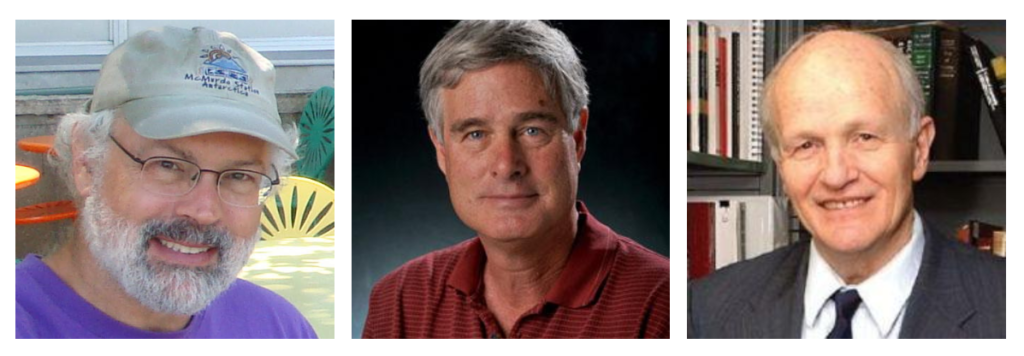
Alan Robock, Brian Toon and Frank von Hippel
Dr. Robock told me he warmly welcomed the study, which would happily coincide with recent breakthroughs in modelling:
[O]ur recent results, using actual forest fires in Canada that pumped soot into the stratosphere, validate and strengthen our trust in the models that simulate the impacts of much more soot from fires ignited by nuclear war.
The “biggest unknown” remained “the amount of soot that would be injected into the atmosphere,” and in this crucial area:
[W]e are working to, for the first time, simulate urban firestorms to calculate the soot emission based on the ‘fuel load’ (how much there is to burn) and various scenarios of nuclear weapon sizes dropped on cities.
Robock’s long-time colleague Dr. Brian Toon (Department of Atmospheric and Oceanic Sciences, University of Colorado) likewise acknowledged that “once you get into an extreme case something surprising might occur,” and that “without observations” – without, that is, the ample ‘data’ provided by nuclear war! – “it will be hard to carry climate models further.” But:
We don’t see any indications at the moment of problems with them. Basically, when you put that much smoke into the stratosphere, the physics is not that complicated. It’s like predicting there will be a winter. It gets cold every day when the sun goes down.
Toon identified a number of currently “unresolvable issues” frustrating hopes of more exact predictions: the “amount of fuel” to be ignited, “how much will burn,” “how high the smoke will go,” and “what the targets are in a war that has never been fought.” All of these, however, should become less dark matters as a result of the candor now required of the Pentagon, so Toon’s “hope is that the Academy panel will recommend further research on these issues and get some funding for people to work on the problems.”
Toon concluded with a remark I found both pertinent and poignant. Noting his involvement “in many large science issues, including the ozone hole, planetary studies, and global climate change,” each of which “has had thousands of scientists work on them,” the study of the Earth-shattering impacts of nuclear war “stands out as a place where no science is being funded, and no one wants to work,” in sharp contrast, alas, to the fortunes invested, and legions of scientists employed, in maintaining and developing nuclear weapons. Urge Toon:
Given its importance, we really need to foster an environment where at least a modest science community outside of DOD and DOE [Department of Energy] can provide advice to policy makers.
As a matter of public policy – of establishing and cultivating appropriate relations between science and society in the nuclear age – this strikes me as a profoundly failed state of affairs, a morally-criminal negligence endangering us all. As Dr. Hans Kristensen declared, in a statement issued on behalf of the Federation of American Scientists, “such a study is both long overdue and urgent”:
The threat of nuclear war and its potential effects have loomed over the human race and the natural environment for far too long. The military’s models for the consequences of nuclear war are shrouded in secrecy but the public has a right to know so it can be better informed to make the right choices about nuclear policy. The National Academy of Sciences would be an ideal institution for conducting a scientific and unbiased assessment of the potential effects of nuclear war.

Page Stoutlan
Speaking for the internationally-influential Nuclear Threat Initiative, Dr. Page Stoutland (vice president for scientific and technical affairs) noted that “while there is not agreement as to the magnitude of the climate effects” of nuclear war, “hopefully the NAS study can shed some light on,” for example, “how agriculture, the economy, health and even society/governance may be impacted”:
There are undoubtedly gaps in our knowledge that need to be addressed so that we can have a better informed debate on the role of nuclear weapons and the implications of use.
Stoutland added that “we have also been reviewing the current understanding of the effects of nuclear weapons,” a subject which had “gotten renewed attention in the last few years due to the work of Toon and Robock,” as well as researchers at DOE’s Los Alamos National Laboratory (LANL), where the Bomb was first built, and Lawrence Livermore National Laboratory (LLNL), which designed and refined a vast array of Cold War warheads.
In November 2020, for example, LLNL published a study examining “the potential for global climate changes from large urban fires ignited in a hypothetical regional exchange of 100 15-kiloton [Hiroshima-scale] nuclear weapons between India and Pakistan,” a scenario already explored by Robock, Toon, and others but now, according to an LLNL summary, taking “new factors into account…using two high-fidelity models for the first time.”
And what the new simulations suggested – while acknowledging “uncertainties” pointing “to the need for further development of nuclear exchange scenarios” – was that “the smoke from 100 simultaneous firestorms would block sunlight for about four years, instead of the eight to fifteen years predicted in other models.”
Two quick reflections. After the COVID traumas of the last year, can anyone begin to imagine what – in a best case scenario! – those four years of blocked sunlight would be like? And has the immense computational firepower of the weapons labs yet been turned on US war plans, examining the likely impacts of the incomparably more devastating thermonuclear exchanges currently envisaged?
I received only one response which, while supportive of the study, voiced skepticism about its potential scientific value, and concern about its possible conduct. Dr. Theodore Postol – Professor of Science, Technology and National Security at the Massachusetts Institute of Technology (MIT) – is a leading independent expert on nuclear war effects, oft-cited by Lynn Eden in Whole World on Fire. He told me that while:
…the question of a study on the impacts on the atmosphere of large-scale nuclear weapon use is extremely important and should be routinely looked at and revised starting from a baseline…I have serious doubts that we will understand the full physical and biological consequences of significant use of nuclear weapons wherever they occur in the world.
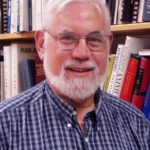
Theodore Postol
Do we understand, for example, “how the atmosphere would go about healing during the period where soot slowly gets removed from the atmosphere and what could happen when the sun starts re-illuminating the ground below?” And how accurately can we “make estimates of soot removal in an unperturbed atmosphere by water condensation?” As he stressed, however, “none of these concerns are an argument for not pursuing research into this extremely important question;” in fact, they can be seen as strengthening the case for the new study. But can the NAS be trusted to conduct it? Postol wrote “bluntly” that the NAS:
…is a club which has truly outstanding scientists as members along with a large number of members who are less than truly outstanding, but are prominent mostly because of unearned social stature within the academic community. The problem with this is that people who are in the ‘club’ are most interested in protecting the reputation of the club rather than making sure the club be made up of the membership with the stature and non-political standards they claim as the norm.
“This human, but unfortunate circumstance,” he argues, “adds another dimension of uncertainty to any study that involves the application of supposedly neutral scientific analysis to a subject of high political interest.”
Postol is clearly still scarred by the “last NAS report that I thought was important to the question of nuclear war” — its “egregiously flawed” 2012 study of the Pentagon’s Ballistic Missile Defense (BMD) program. But if that report (as many experts agree) was “simply a sham” – failing to expose DOD hype, false advertising and even rigged testing – we should note that Robock referred me to “the NAS study on nuclear winter done in the 1980s,” which “was very valuable in confirming the climate model results.”
On balance, it seems odd to presuppose that the NAS will either produce a superb report or concoct a corrupt one. Much will depend on the composition of the panel, but just as its members will have to work to keep the Pentagon honest, so the work of the panel itself will need to be monitored closely, to verify whether the trust being placed in ‘the club’ is in this instance well founded.
But if the job is well done, it will surely reach the same sane conclusion as the 122 states adopting the Ban Treaty in 2017: that we have simply got to stop playing with nuclear fire.
———-
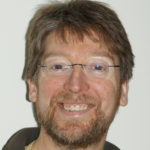
Sean Howard
Sean Howard is adjunct professor of political science at Cape Breton University and member of Peace Quest Cape Breton. He may be reached at seanjameshoward@gmail.com. This article, originally published by the Cape Breton Spectator, has been republished with the permission of the author.


1 comment for “Shining a Light on the Dark Aftermath of Nuclear War”